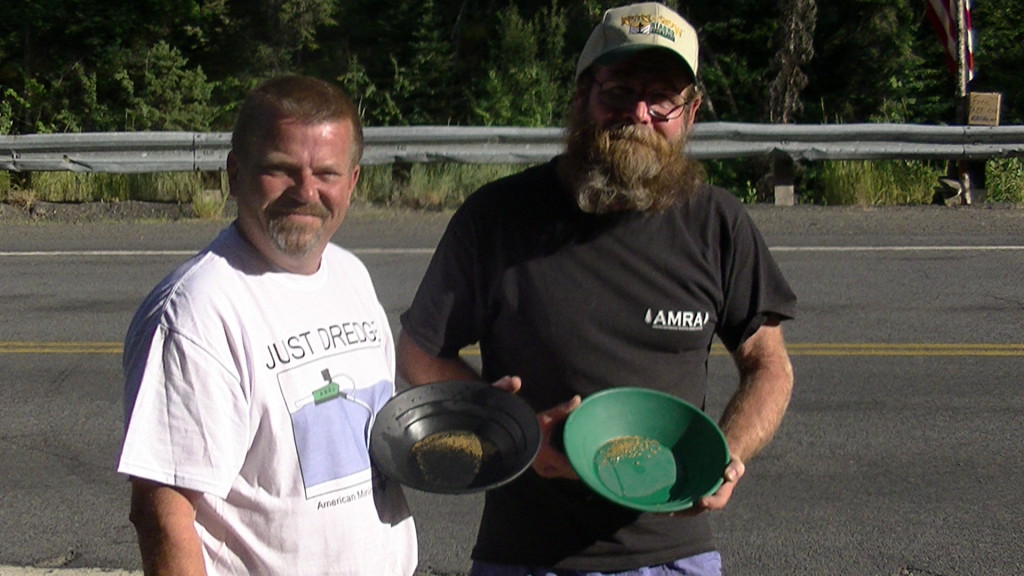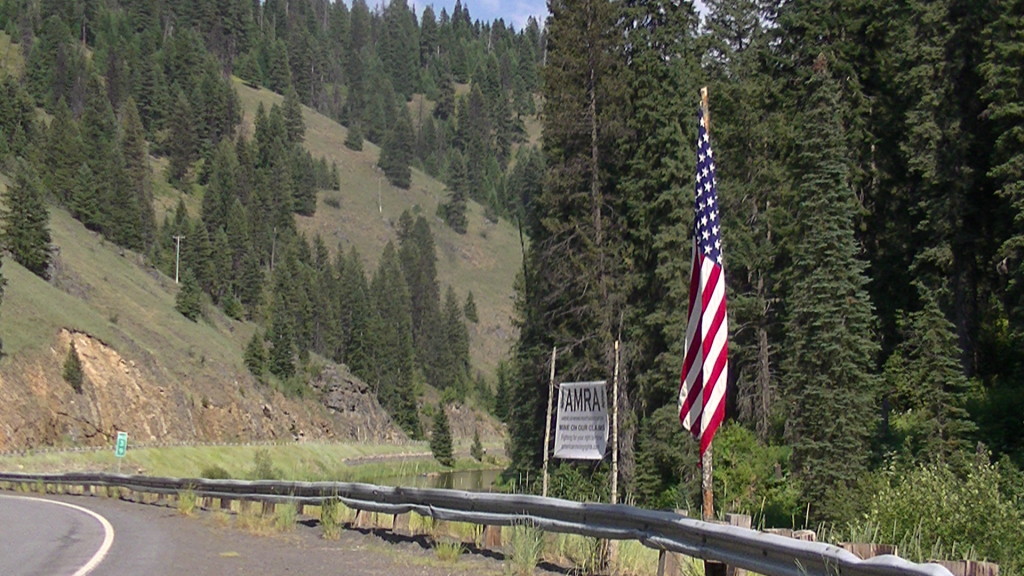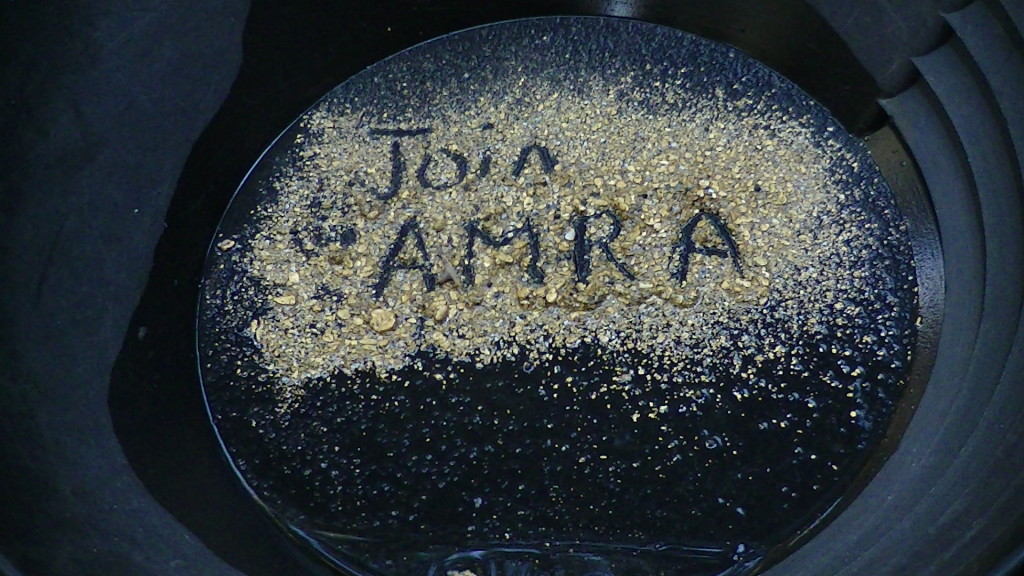
By Mr. Shannon Poe
President AMRA
American Mining Rights Association

What do you do when a regulatory agency goes rogue? What do you do when they ignore the Supreme Court? What do you do when they act as Congress and create their own laws? Scott detailed in last month’s issue of ICMJ the “Occupy the Waters” event in Riggins Idaho where about a hundred small miners and supporters of small miners converged on the Salmon River and dredged in opposition to the EPA coming out with what can only be described as a prohibition on suction dredging. Even though the state of Idaho issued suction dredge permits as they have for decades, the EPA decided all suction dredgers needed to purchase a “pollutant discharge permit” from them or face fines of $37,500 per day. Permits they also refuse to issue. We have already heard feedback from our opposition that “AMRA is out there disregarding the law”. Let’s be clear, the EPA regulation is not a law, it is a regulation they elected to impose upon the miners without any science to support the regulation. In fact, we can provide at least 12 accredited studies which show precisely the opposite, that suction dredging does not harm fish or fish habitat. The EPA has never provided a single study showing suction dredging to have harmed a single fish.
Shortly after the Occupy event, which AMRA attended and supported along with ICMJ, we packed up our two dredges, a Proline 6” (big blue) and a Proline 4” (little red) and headed for our claim about an hour away on the South Fork of the Clearwater to dredge openly in opposition to the EPA . Dredging with me was AMRA’s Field Manager, John Ratley, a wiry and energetic man with “monkey strength” and AMRA’s Promotions Manager, Mike Walker, a nearly 6’ tall man, 250lbs with herculean strength. Perfect partners for dredging a river with large boulders.
We obtained our $35.00 non-resident suction dredge permits from the Idaho Water Resources Department and put our dredges in the water July 14th in anticipation for the opening of the season which runs from July 15th to August 15th. The dredges were ready to go first thing in the morning and we were greeted by Idaho Senator Sheryl Nuxoll, Idaho County Commissioner Jim Chemlik, several small miners and suction dredgers all in support of our opposition to the out of control EPA. We placed our AMRA banner next to the roadside near our dredges and 10’ American flag to announce to the EPA we were here, we were dredging and they could come and fine us.
The first day came and went, with many of the locals from Elk City honking and waving in support of our opposition to the EPA. Word had gotten out quite quickly all the way to Lewiston 1 ½ hours away that people were standing up to the government. The EPA never showed, but they did drive by. The second day came, and while the EPA did drive by, again, they did not stop. The third day resulted in a smashed finger from moving a large boulder by hand since they outlawed any type of motorized winch. No EPA.
The fourth day began with the Idaho Road Department stopping by our camp right above our dredges to inform us our AMRA banner was 9’ too close to the road and we would have to remove it, or they would confiscate it. Now why do you suppose the road department would threaten to confiscate our banner over a something as trivial as it being 9’ too close to the road? Apparently, any signs “which may cause a distraction” must be located 50’ from the center line of the road. Our sign was 41’ from the center line, we measured it. Rather than have a major altercation and have our members who would be mining this claim in the future be hassled, we decided to move our banner to the river where it was even more visible, but over 50’ from the center line. On the drive to Elk City, we counted 3 more signs of advertisements located within the 50’ boundary. On another drive to Grangeville, we counted no less than 15 signs which were in violation and had been there for what was obviously years. Maybe they just don’t like plain black and white signs as the others were quite colorful, much larger and were not in opposition to any government intrusion.

An interesting thing happened on the evening of day 4 while sitting in camp discussing the gold we found over a nice campfire. What appeared to be a chinchilla, started ravaging our camp, garbage bucket and Mike’s truck. We were confused as we didn’t think it could be a chinchilla in northern Idaho. John thought it was a rat, so Mike came up with the name “ratchilla” and he stayed with us for the next 9 nights. As most men and women do, we all told stories around the campfire and on this particular night we started discussing the TV series “Finding Bigfoot”. After all, our claim was named Sasquatch 2. We all laughed and joked how they would knock on trees and make silly calls trying to call out a “Squatch”. John grabbed one of the big iron rocks he dredged up and slammed it against a tree trunk 3 times. We all laughed. That is until Mike and I heard a knock coming from the hill above us, a hill which has no roads and no humans for miles and miles. Then something busted through the brush above us. Now, I don’t know if there is such a thing as Sasquatch or not, but whatever it was certainly wasn’t our little ratchilla.
Day 5 came with some frustration. Mike and I had been running the 6” upstream about 300 yards from John, who was dredging in a boulder patch on an inside bend and finding good gold with his 4”, actually more gold that we were with the 6”. We had dredged up the outside wall for over 70’ and 20’ wide near the road and had only found one paystreak. We were beginning to approach the area of the river where it turned and we decided to punch a swath straight across the river and look for the deposit coming off the inside bend. We dredged straight to bedrock, about 6’ to 8’ down and a punched a hole 20’ wide, all the way across the river. No paystreak. We were finding decent gold, just not what we knew the river held. Still no visit from the EPA and many of the miners who were stopping by daily started to peter out. We did have two other AMRA members dredging, one above us with a 5” from Arizona and one below us with a 4” from Oregon, both were doing well.
Day 6 found John still in his boulder patch and Mike and I heading straight for the inside bend. By this time we had a 20’ X 20’ hole, 8’ deep and were constantly in what we called “coffee creamer”. This was concretized material which had obviously never been dredged and the cobble was covered with a coffee creamer colored substance. Just below that, about a foot thick was what all dredgers look for, what we call orange juice. Concretized orange compacted cobble located right on top of bedrock and filling the decomposing bedrock cracks. The orange color is indicative of high iron content and mineralization, just what we wanted to see. We really believed we were in the right stuff now. We were not seeing gold on bedrock, nor were we seeing it go up the nozzle despite the crystal clear water for which the river was named. We were becoming frustrated, and were reminded nightly that John believed he was a much better miner than us for getting more gold with a smaller machine. That night at the campfire, John decided to try his Squatch knocks again. No response, so he decided to give out his best vocal call. This call, if that is what you can call it, sounded like what can only be described as a cross between a 14 year old girl screaming that her favorite IPAD just got stolen and a moose in heat. Surprisingly, no Sasquatch answered that call.
Day 7 was quiet. We were tired, I smashed the same finger I smashed a few days earlier and we still hadn’t found that paystreak. We finally got more gold than John. No EPA. No Squatch’s, but ratchilla was always there.
Day 8 Mike and I were reaching the inside bend where the gold must be, but unfortunately had the same results, good gold, but not what we knew was there….somewhere. At the end of the day we were greeted by John doing his “nugget dance” in camp. We knew he had found a nice piece. I was impressed by the chunky piece, but not as impressed with the dance. He was muttering “nuggy, nuggy, nuggy” while hopping around like he was trying to wipe some of my dogs waste off his boots. I stared in stunned silence. Still no EPA.
Day 9 came and we decided we would either hit it today, or move big blue the next day. We were right on the drop spot on the inside bend where the gold “should” be and dredged for 6 straight hours. We were tired, and saw good color in our box. That night at the cleanup, we beat John again, but barely. We decided we were going to move the dredge down below John, on his inside bend in the boulder patch in the morning.
Day 10 was cloudy with drizzle and it was substantially colder. I had been dredging in a farmer john, without the jacket all week. Mike was always dredging in his shorts and a light 3 mil top. Mike is an iron man. John always wore his 7 mil one piece suit. We packed up the hose on top of the dredge and John and I decided to float it down the river sitting on each side. After about an hour, we got the dredge down below John and Mike and I proceeded to punch a new hole, on the inside bend, but towards the center of the river. After about an hour, we were 4’ down and it was obvious it was dredged by the cobble which had no small material around it and the Heidelberg can from the 70’s near bedrock. Then I started to get cold, desperately cold. I’ve never had hypothermia, until now. I pulled my gloves off and my fingers were yellow. Not blue, but yellow. I started shaking and could tell I was getting dizzy. We immediately headed to camp and I stripped out of my gear and immediately got warmed up. Close call. We learned that the small creek where John was dredging was at least 10 degrees colder than the river and with the overcast skies, just running a farmer john was not enough. The remainder of the trip found me in full gear. Later that afternoon, we moved the dredge up to within 30’ of John, but with us in the middle of the river working towards the bank. We beat John again. I think I was still delirious at camp that night since the guys actually talked me into trying a Sasquatch call. No response and I’m pretty sure ratchilla was too scared to come into camp that night or laughing so hard he couldn’t move.

Day 11, still no EPA and we were starting to see color on bedrock and some going up the nozzle. We were heading straight for the creek which we now concluded must be a “feeder” to the claim. John was dredging the entire time right below (about 50’) where the creek came into the river. We were in 7’ of water and the bedrock cracks were perfect, rotted, craggy and deep. The boulders we were now in were the size of a truck hood and barely moveable underwater by the two of us. Great signs. We crushed John that day.
Day 12 found us about 20’ from the bank where the creek came in. Lots of coffee creamer and about a foot and a half of orange juice sitting on bedrock. We could see gold. We had the occasional visitor and a few folks from Elk City thank us for supporting their town and economy, they clearly understood how much their little town was losing because of the fear the EPA put into the miners over threats of $37,000 per day fines for exercising their rights. This night was a good cleanout. Upstream from our claim, two rivers make the SF of the Clearwater and we noticed the DFG and a construction crew ripping out a bridge over the Red River where it forms the Clearwater with the other tributary, the American River. When we inquired what they were doing from the locals, we were told that there were two culverts under the bridge and that DFG believed the spawning fish were being confused by the two culverts so they were going to consolidate them into one. Let that sink in for a minute. A fish is confused by which culvert to take upstream when they are located just 5’ apart. Now, I’m not a fisheries biologist, but doesn’t this seem like an incredible waste of tax payer money? Does a fish really get confused when confronted with two culverts, so much so that they don’t move upstream to spawn? They were putting in an entirely new bridge. Maybe they should put up some signs for the fish to follow…but at least 50’ from the culverts. John had a brilliant idea that night at camp while ratchilla was ravaging our pop cans. He thought we should put two small culverts leading to our bucket of pop cans to confuse ratchilla, maybe he would just turn around and go away.
Day 13, our last day dredging. We knew what was going to happen, and I’ll bet you can sense it too. We had our best day of the trip. We reached the bank just feet from where the creek was feeding the river and could feel the cold water coming in the river. Gold was visible, bedrock was craggy and orange juice was 2’ thick on the bedrock. John had started going towards the center of the river and his gold was starting to get less and less. We now knew where we would dredge next year.
We spent 14 days on the Clearwater in opposition to the EPA and they never once stopped to confront us or our two other members. We got good gold, made a statement that a regulatory agency cannot create laws and directly ignore Supreme Court decisions. We made friends, smashed fingers, got hypothermia, saw a strange critter (later identified as a wood rat) ravage our camp nightly, heard something answer John’s knocks on trees and walked away with memories of a lifetime. Our government calls suction dredging “recreational”. I lost 11 lbs in 13 days with my $12,000 dredge. We drove 16 hours to dredge our claim, which we pay property taxes on. There is absolutely nothing “recreational” about suction dredging.
How much gold did we get? A miner knows better than to ask that question. We got a few flakes…………here are a few of those Idaho flakes.

